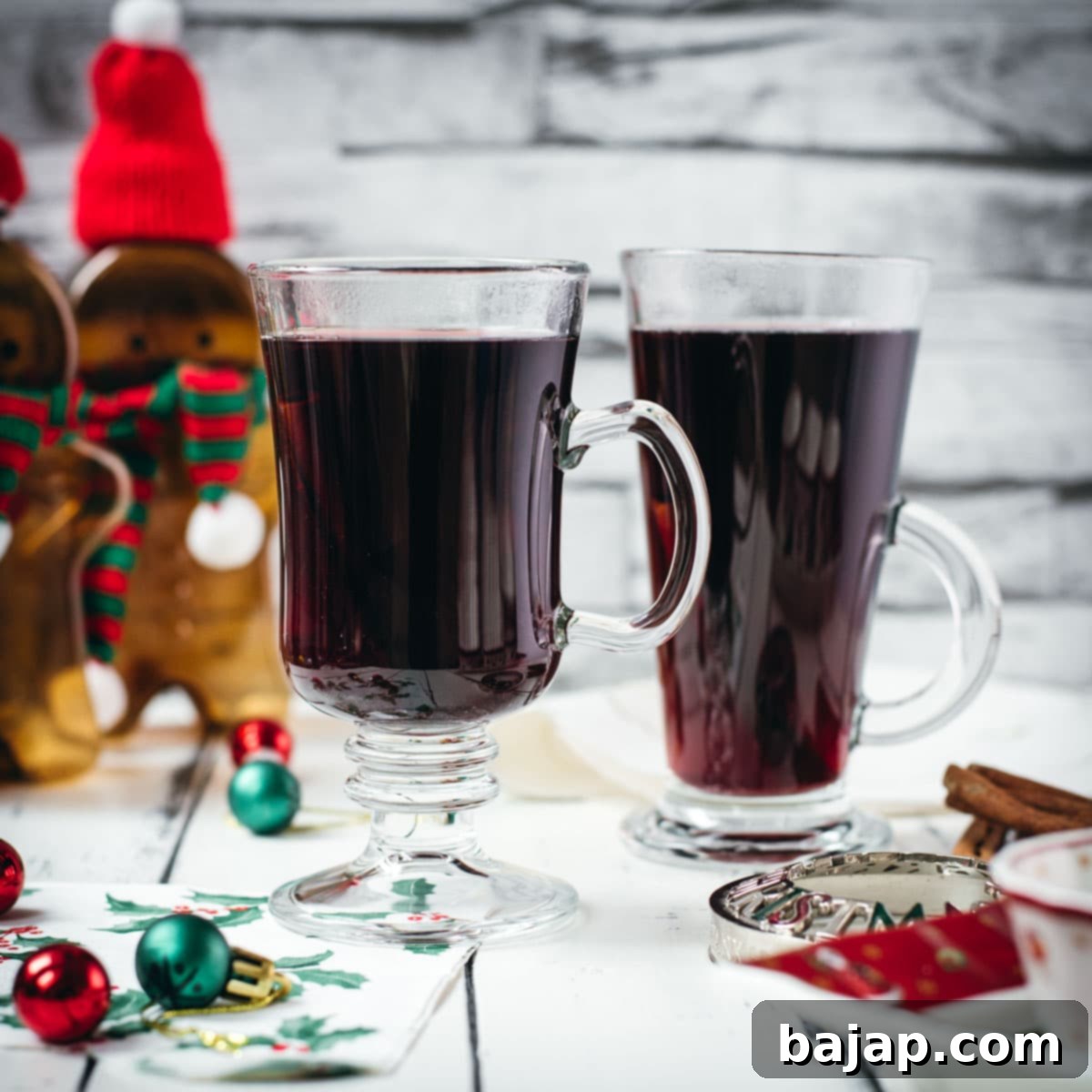Authentic Austrian Glühwein Recipe: Your Guide to Cozy Christmas Mulled Wine
As soon as the crisp autumn leaves begin to fall and a hint of winter chill fills the air, a special kind of magic awakens – the magic of Christmas! For me, that means it’s time to transform my home into a festive sanctuary, brimming with twinkling lights, evergreen aromas, and, most importantly, the comforting scent of a beloved Austrian tradition: Glühwein. Here in Austria, the Advent season is steeped in cherished customs, and few are as iconic or as heartwarming as a steaming mug of mulled wine found at our enchanting Christkindl markets.
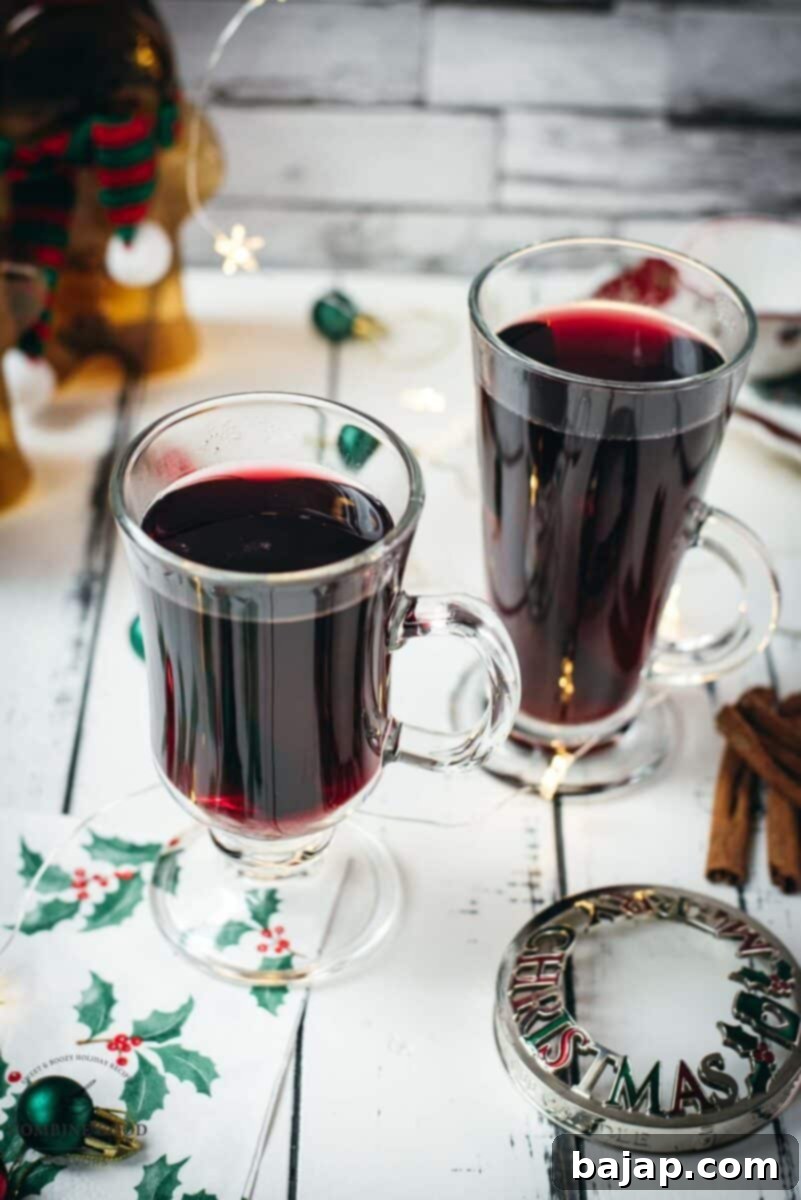
Imagine wandering through a charming Viennese Christmas market, the air alive with festive chatter, carolers singing, and the soft glow of countless lights. Now, picture yourself wrapping your hands around a warm mug, inhaling the intoxicating aroma of cinnamon, cloves, and citrus dancing above the rich red wine. That, my friends, is the quintessential Glühwein experience. It’s more than just a drink; it’s a sensory journey that evokes pure holiday joy, a comforting hug in a cup that brings friends and family together, creating unforgettable memories.
Today, I’m thrilled to share with you a classic Austrian Mulled Wine recipe that will allow you to recreate this magical ambiance right in your own kitchen. This recipe captures the authentic flavors you’d find at any Austrian Christkindl market, infusing your home with the inviting scents of the season. So, invite your loved ones, perhaps roast some chestnuts, and prepare to toast to the most wonderful time of the year. Let’s make every sip a celebration as we embrace the festive spirit of Advent together!
🥘 Essential Ingredients for Authentic Glühwein
Crafting the perfect Glühwein begins with selecting high-quality ingredients that harmonize to create that distinctive festive flavor. Each component plays a vital role in building the layered aroma and taste that makes this spiced wine so irresistible.
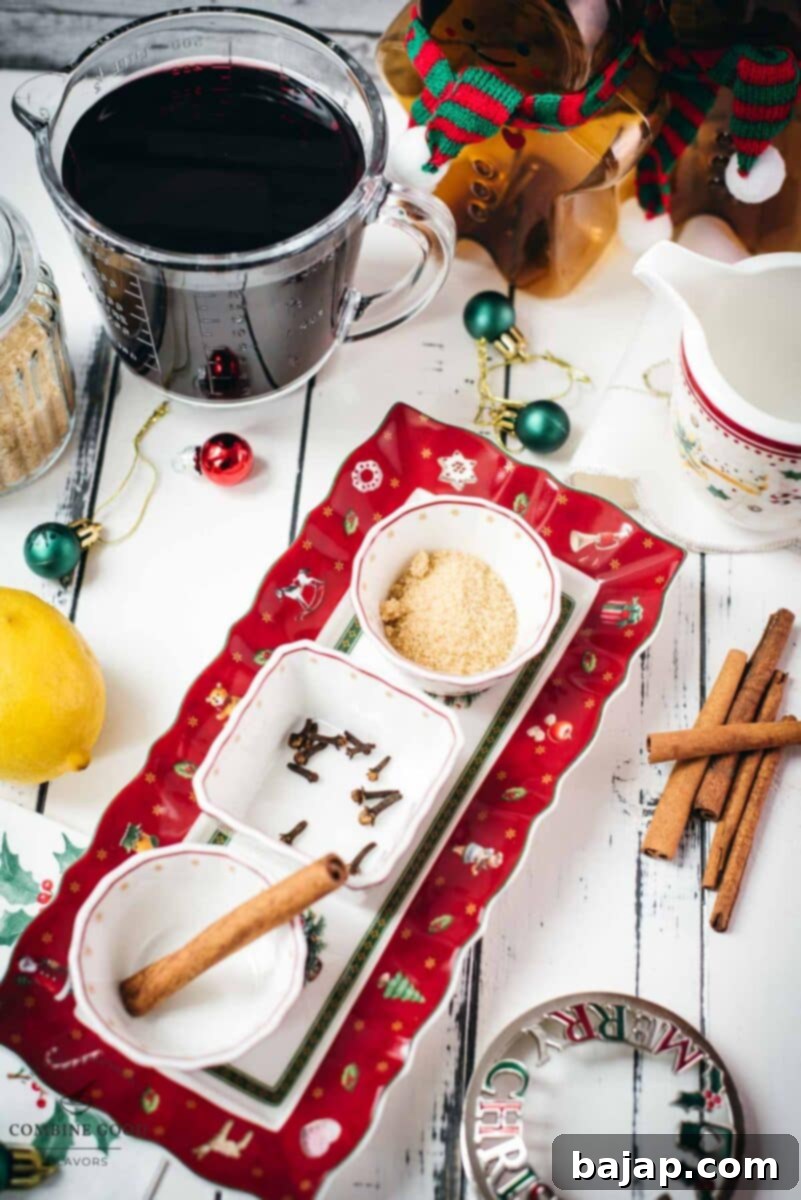
- Red wine – Opt for a full-bodied and fruity variety that isn’t too expensive. Think along the lines of a dry Zweigelt, Pinot Noir, or a Merlot. The wine forms the backbone, so choose one you genuinely enjoy drinking on its own.
- Water – A small amount of water helps to create a base for the spices to infuse thoroughly before the wine is added, preventing the alcohol from burning off too quickly.
- Cinnamon sticks – Essential for that classic warm, woody aroma. You’ll need some for infusing during the boiling process and a few extra for garnishing each mug.
- Whole cloves – These tiny, potent spices deliver a pungent, sweet, and slightly bitter note that is crucial to mulled wine’s character. A few go a long way!
- Lemon zest – Fresh lemon zest adds a bright, zesty counterpoint to the rich spices and sweet wine. Ensure you only use the yellow part of the peel to avoid bitterness.
- Brown sugar – To sweeten the Glühwein to your preference. Brown sugar adds a deeper, caramel-like sweetness compared to white sugar, complementing the other warming spices beautifully.
For precise quantities and a complete nutritional breakdown, refer to the recipe card at the bottom of this article.
🔪 Step-by-Step Instructions to Make Austrian Glühwein
Making traditional Austrian Glühwein is surprisingly simple, allowing you to focus on enjoying the delightful aromas and sharing the festive spirit. Follow these easy steps to create your perfect batch:
Step 1: Infuse Your Spices
In a medium-sized saucepan, combine the water, carefully peeled lemon zest, one cinnamon stick, and your chosen number of whole cloves. Now, add a generous spoonful (or more, if you’re feeling extra festive and have a sweet tooth!) of brown sugar. Bringing this mixture to a boil first is key. This allows the heat to extract the maximum flavor and aroma from the spices and lemon zest, creating a concentrated, aromatic base before the wine even touches the pan. Let it simmer gently for a few minutes, allowing those cozy holiday scents to truly fill your home.
Step 2: Gently Heat the Wine
Once your spice-infused water is bubbling away and intensely fragrant, it’s time to add the red wine. Pour in your chosen full-bodied red wine, and then gently heat the entire mixture. This is the most crucial step: do not let the Glühwein boil! Boiling the wine will cause the alcohol to evaporate rapidly, diminishing the flavor and the festive kick. Instead, warm it slowly over medium-low heat until it’s steamy hot, typically reaching a temperature between 70°C and 80°C (158°F and 176°F). This gentle heating preserves the delicate nuances of the wine and the full spectrum of the spice flavors.
Step 3: Strain for Smoothness
After the mulled wine has reached its ideal warmth, carefully strain it through a fine-mesh sieve. This step removes all the spent spices and lemon zest, ensuring a smooth, delightful sip without any gritty bits. While some prefer to leave the spices in for a rustic look, straining results in a cleaner and more pleasant drinking experience.
Step 4: Serve and Garnish
Now for the best part! Slip a fresh cinnamon stick into each serving glass or mug. This not only adds a beautiful visual touch but also imparts a subtle, fresh cinnamon aroma as you drink. Pour the steaming Glühwein over the cinnamon stick. You can also add a slice of orange or lemon for an extra citrusy hint and visual appeal. Serve immediately and enjoy the warmth!
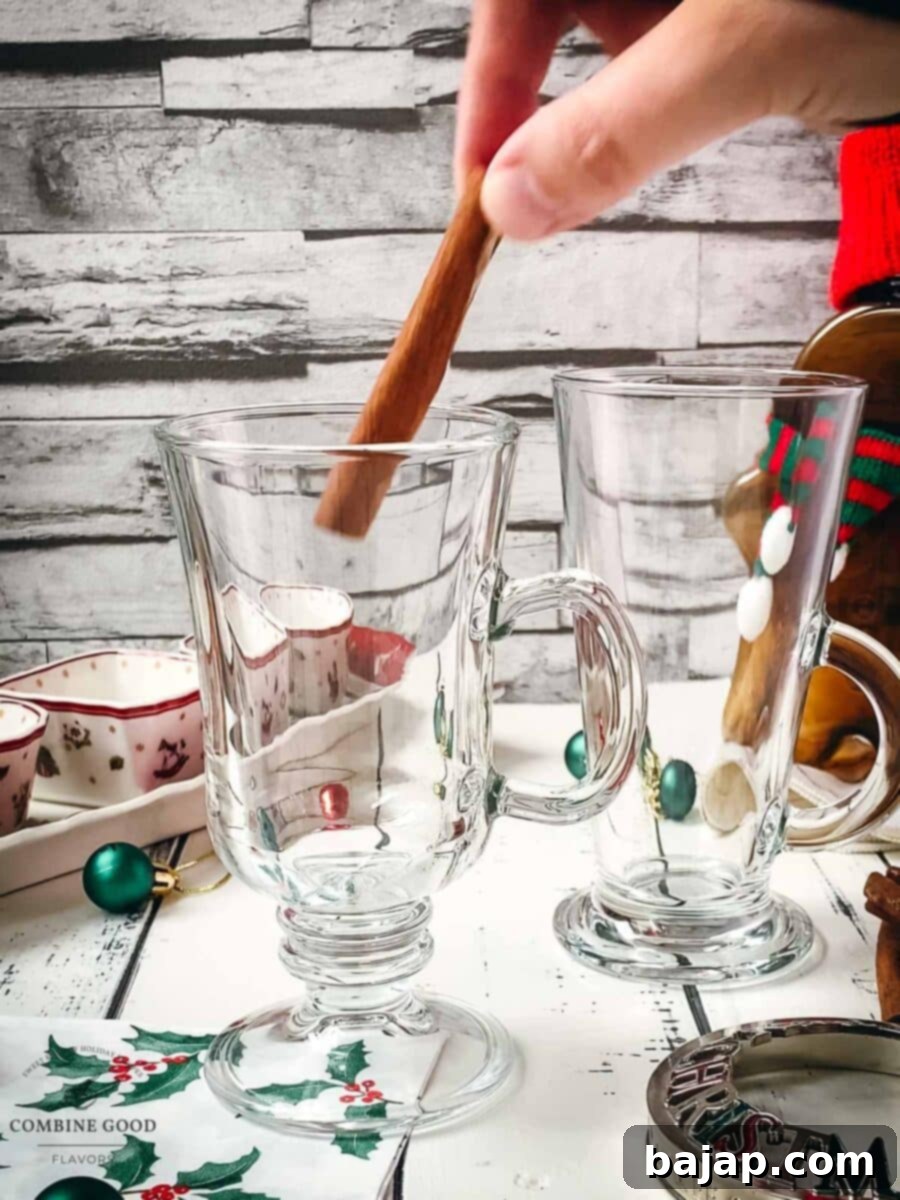
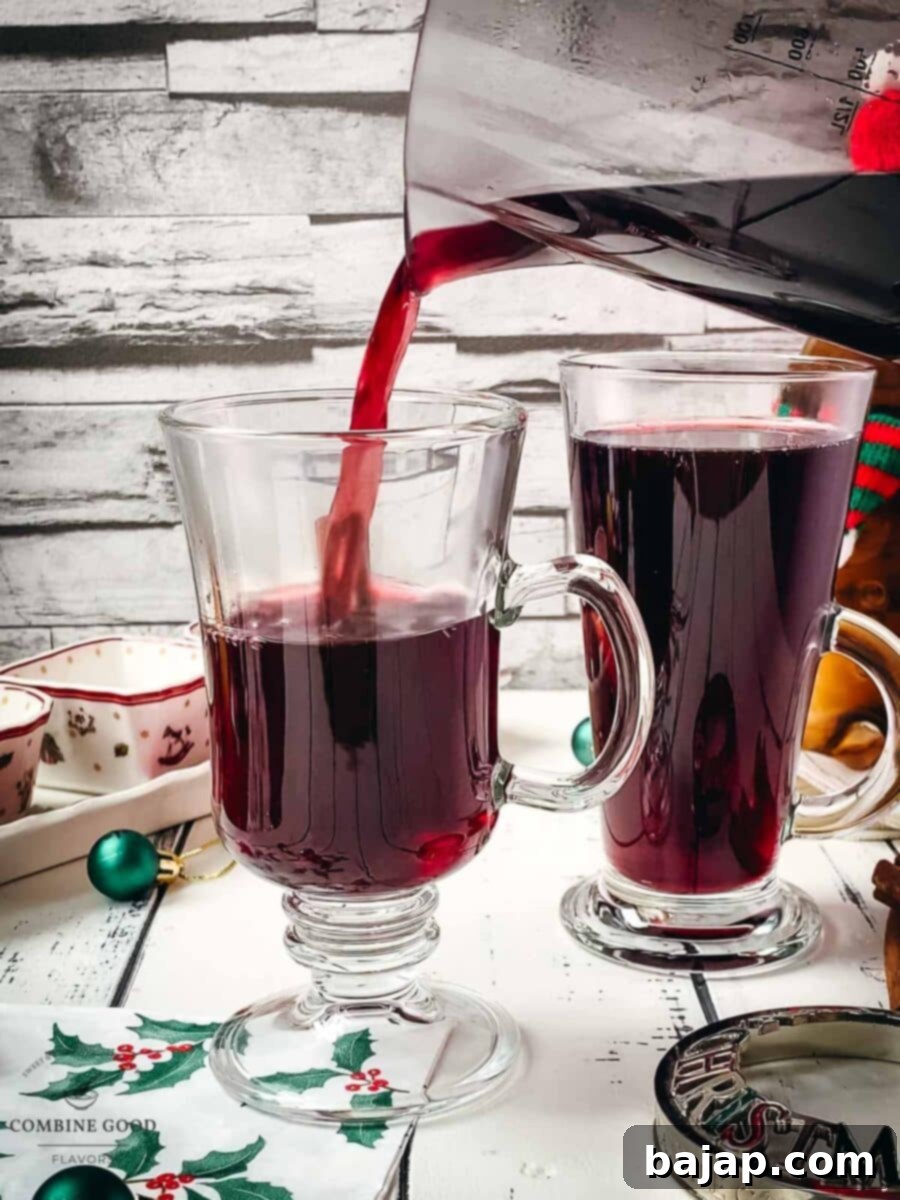
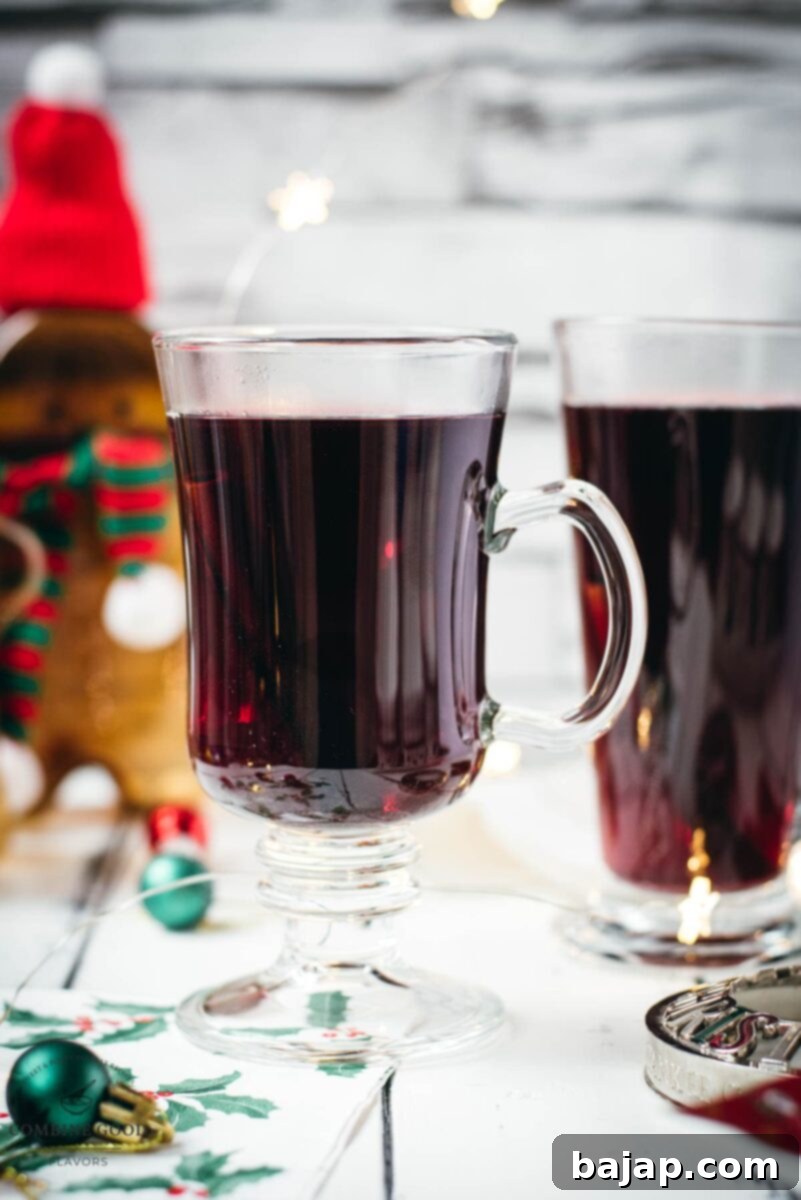
🎄 Glühwein: A Cherished Austrian Tradition
Mulled wine, affectionately known as Glühwein, is far more than just a seasonal beverage in Austria; it’s a vital part of our cultural heritage, especially during the enchanting Advent season. From the bustling streets of Vienna to the quaint villages nestled in the Alps, you’ll find festive stalls brimming with steaming mugs of this spiced delight, warming the hands and hearts of countless festive shoppers and revelers alike. It’s an integral part of the Christkindl market experience, a symbol of warmth and conviviality that defines the Austrian Christmas spirit.
Whether prepared with robust red wine or a lighter white wine (known as “Weißer Glühwein”), the essence remains the same: a beautiful infusion of cozy, aromatic spices like cinnamon, cloves, star anise, and a bright hint of citrus, all sweetened to perfection. The secret to a truly great Glühwein lies in how it’s heated – gently and patiently. The golden rule is to never let it boil, keeping the temperature below 80°C (176°F). This careful approach ensures that the alcohol, and more importantly, the delicate aromatic compounds from the spices, remain intact, delivering a perfectly balanced and flavorful experience that truly captures the festive cheer.
The origins of mulled wine stretch back to ancient times, with records indicating that Romans enjoyed a hot, spiced wine mixed with honey. Throughout the Middle Ages, spiced wine was a common drink, believed to have medicinal properties and served as a cold beverage to preserve wine. However, it wasn’t until the 19th century that hot mulled wine truly gained widespread popularity, particularly in Vienna. Initially inspired by English culinary trends, it rapidly evolved from a novel indulgence into a deeply ingrained winter tradition across Austria.
Early on, the medical community viewed this spiced concoction with suspicion, but its warming qualities soon led to it being celebrated as a popular remedy for colds and the biting chill of winter. By the late 1800s, Glühwein and various punches had become indispensable staples of the holiday season, with homemaking magazines eagerly publishing a plethora of recipes. Today, as we raise a mug of Glühwein, we are not just enjoying a delicious drink; we are participating in a rich history, keeping the cherished Christmas spirit glowing for generations to come.
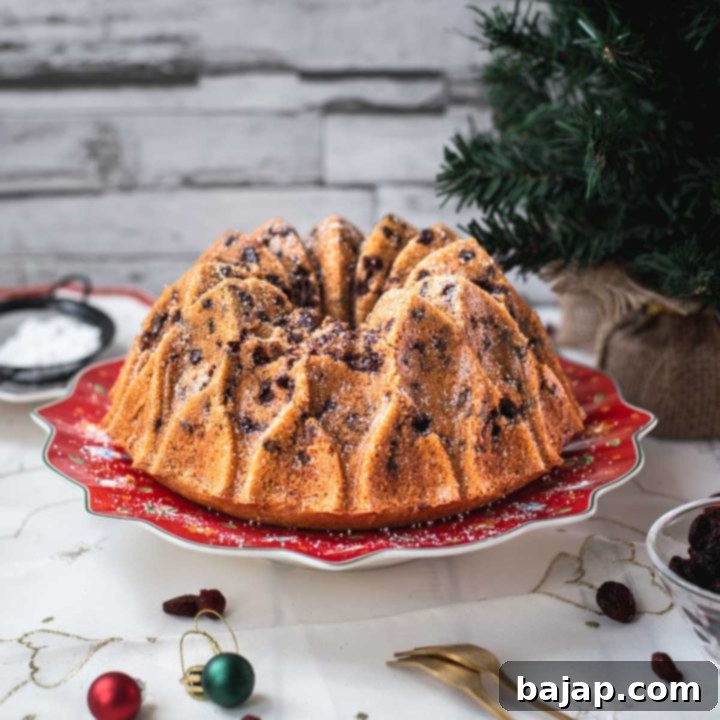
viral recipe!
Cranberry Bundt Cake
This Cranberry Bundt Cake is a delightful blend of cinnamon, dark chocolate chips, and dried cranberries that will surely satisfy your sweet cravings and bring a festive touch to any table.
🥳 Celebrate Mulled Wine Day!
While Glühwein is undeniably synonymous with the twinkle of Christmas lights and the festive cheer of December, there’s a special day dedicated to this beloved beverage that falls far from the Advent calendar: March 3rd is Mulled Wine Day! It might seem like an unexpected time to enjoy a warming drink, but it offers the perfect excuse to rekindle that festive spirit during the tail end of winter.
For those of us in Austria, where Glühwein is a staple of the Advent season, celebrating Mulled Wine Day is a delightful way to extend the holiday glow. It’s like a little taste of Christmas magic, bringing back the comforting warmth of mulled spices and sweetened wine even as we eagerly anticipate the arrival of spring. So, why not mark the occasion by stirring up a fresh pot of this classic drink? It’s a wonderful way to chase away the last vestiges of winter chill and keep the holiday spirit alive, proving that the joy of Glühwein isn’t confined to just one season.

Christmas CookieBook!
Snag that Recipe eBook!
Discover 20 delicious Christmas Cookie recipes that will make your holiday baking truly special. Get inspired and create festive treats for everyone!
Yes, please!
🍷 Choosing the Best Red Wine for Glühwein
The choice of red wine is paramount to the success of your homemade Glühwein. While it might be tempting to use a very expensive bottle, there’s no need to splurge. Instead, focus on specific characteristics that allow the wine to meld harmoniously with the spices without being overwhelmed or creating an unbalanced flavor profile.
When selecting a red wine for mulled wine, look for one that is **full-bodied and fruity**, with prominent red fruit notes. Grapes like **Zweigelt** (a popular Austrian varietal), **Pinot Noir**, **Merlot**, or a good quality **Grenache** are excellent choices. These wines typically offer a vibrant fruitiness that stands up well to the rich spices, creating a delightful balance of sweet, tart, and warm flavors.
Conversely, **steer clear of wines with high tannin content or strong oak flavors**. Heavily oaked wines (like some Cabernet Sauvignons or Syrahs) can become bitter and harsh when heated and mixed with spices. Similarly, wines with very high tannins can create an astringent, unpleasant taste. Light-bodied reds, while easy to drink on their own, might not quite do the trick either, as they can get lost amidst the robust flavors of cinnamon and cloves.
Ideally, opt for a **medium-bodied dry wine with minimal to no oak aging** and a balanced acidity. A wine with gentle tannins is perfect, as it provides enough structure to carry the spices and sweetness without overpowering them. The goal is to choose a wine that is pleasant to drink on its own but is also robust enough to transform into a comforting, aromatic spiced beverage. Experimenting with different varieties can be fun, but always remember to prioritize fruit-forward, approachable reds for the best Glühwein experience.
🍽 Essential Equipment for Making Glühwein
Making mulled wine doesn’t require specialized tools, but having these basics will make the process smooth and enjoyable:
- Saucepan: A sturdy saucepan large enough to hold all your ingredients comfortably.
- Grater for the zest: A microplane or fine grater for easily removing only the fragrant zest from your lemon, avoiding the bitter white pith.
- Sieve: A fine-mesh sieve to strain out the used spices and lemon zest for a smooth drink.
- Serving glasses: Heat-proof mugs or glasses to enjoy your warm Glühwein.
🎄Other Christmassy Recipes and Tips for You to Try
Looking for more festive inspiration? Here are some other delightful Christmas recipes and tips to make your holiday season even more special:
- Raspberry Almond Thumbprint Cookies
- Snowball Cocktail
- No-bake Candy Cane Oreo Cake Pops
- Chocolate Chip Cookies with Chestnut Flour
- Coconut Busserl
- Marzipan Potatoes with Booze
- Zimtsterne (Cinnamon Star Cookies)
- Baking Basics for Christmas Cookies
- Festive Cranberry Gin and Tonic
- Easy Peppermint Bark
- Cranberry Gin Spritz
- Linzer Cookies with Egg Liqueur
- Cranberry Aperol Spritz
- Sweet Dips for Cookies
- How to decorate a real Christmas Tree?
–> Explore more Christmas Recipes
If you try this delightful Austrian Glühwein recipe, I would absolutely love to hear how you liked it! Please consider giving it a ★★★★★ star rating and leaving a comment below – your feedback means the world. You can also sign up for our Newsletter to receive delicious homemade recipes weekly, or follow me on Pinterest or Instagram and share your festive creation with me. Just tag me @combinegoodflavors and hashtag #combinegoodflavors so I don’t miss it!
📖 Recipe: Classic Austrian Mulled Wine (Glühwein)
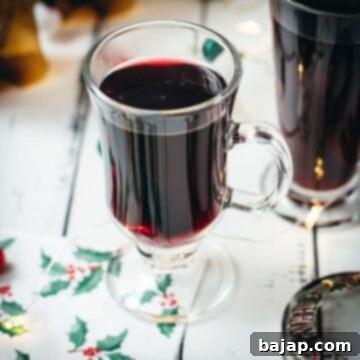
Austrian Mulled Wine (Glühwein)
Recipe by Nora
Bring the magic of Austria’s festive Christmas markets into your home with this traditional Glühwein recipe. Made with red wine and aromatic spices, this classic mulled wine is the perfect winter warmer, offering cozy comfort and festive cheer in every single sip.
Pin Recipe
15 mins
15 mins
Alcoholic beverage, Christmas drink
Austrian
2 Servings
89 kcal
Equipment
- Saucepan
- Grater for the zest
- Sieve
- Serving Glasses
Ingredients
- ¼ cup Water
- 1 Cinnamon stick (for boiling)
- 3-6 Cloves
- Lemon zest (from one lemon)
- Brown sugar (to sweeten, to taste)
- 2 ¼ cups Red wine (full-bodied and fruity)
- 2 Cinnamon sticks (for garnish)
Instructions
- In a saucepan, combine ¼ cup water, 1 cinnamon stick, 3-6 cloves, and the lemon zest. Sweeten with brown sugar to your desired taste.
- Bring this mixture to a boil, allowing the spices and lemon zest to infuse deeply and fill your kitchen with a delightful holiday aroma.
- Next, pour in the 2 ¼ cups of red wine. Gently heat the mixture until it’s steaming hot, but do not let it boil! Maintaining a gentle heat preserves the wine’s flavor and alcohol content.
- Once warmed to perfection, strain the mulled wine through a fine-mesh sieve to remove all the solid spices and zest, ensuring a smooth, festive sip.
- Place one fresh cinnamon stick into each serving glass or mug, then pour the warm Glühwein over it. Serve immediately and enjoy!
Sign up and let me spoil you weekly with a delicious homemade recipe!
Austrian mulled wine, Glühwein, Gluhwein mulled wine, Mulled wine
Mention @combinegoodflavors or tag #combinegoodflavors!
Nutrition values are estimates only, using online calculators. Please verify using your own data.
Calories: 89 kcal |
Carbohydrates: 11g |
Protein: 0.3g |
Fat: 0.1g |
Saturated Fat: 0.03g |
Polyunsaturated Fat: 0.02g |
Monounsaturated Fat: 0.02g |
Sodium: 25mg |
Potassium: 132mg |
Fiber: 3g |
Sugar: 6g |
Vitamin A: 16IU |
Vitamin C: 2mg |
Calcium: 72mg |
Iron: 2mg

⛑️ Food Safety Guidelines for Your Kitchen
Ensuring food safety is paramount when preparing any recipe, especially when serving guests. Please keep these general guidelines in mind to prevent foodborne illness and ensure a safe cooking environment:
- Temperature Control: If heating ingredients that could be susceptible to bacterial growth (though less critical for mulled wine, it’s a good general practice), cook them to a minimum internal temperature of 165 °F (74 °C). For mulled wine, ensure it reaches a sufficiently hot temperature for serving without boiling.
- Cross-Contamination: Always use separate utensils, cutting boards, and dishes for raw foods and cooked foods to prevent cross-contamination. This is crucial even if you’re not working with meat for this specific recipe, as good habits are key.
- Hand Washing: Wash your hands thoroughly with soap and warm water before and after handling food, especially after touching raw ingredients.
- Temperature Danger Zone: Do not leave perishable food sitting out at room temperature for extended periods. While Glühwein is served hot, any components used in its preparation should be handled safely.
- Supervision: Never leave cooking food unattended, especially when using a stovetop.
- Cooking Oils: If you were to sauté or fry anything, always use oils with a high smoke point to avoid harmful compounds and unpleasant flavors.
- Ventilation: Always ensure good ventilation when using a gas stove or any cooking appliance that produces fumes.
For further comprehensive information on safe food handling practices, please check resources like the Safe Food Handling – FDA guidelines.
